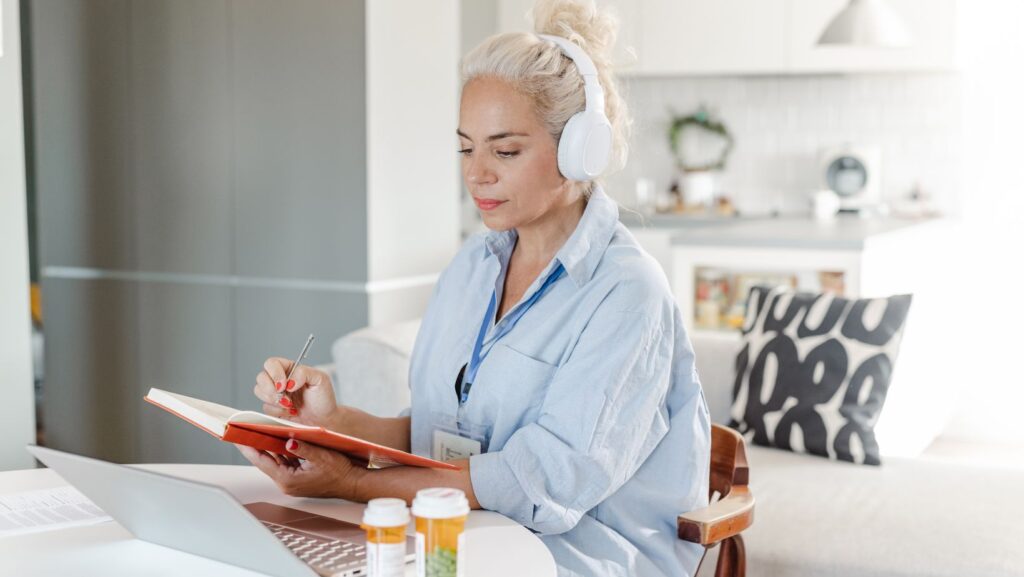Listening therapy has emerged as a powerful tool for enhancing cognitive abilities and improving communication skills. Selecting the right listening therapy tools can significantly boost cognitive function, attention span, and auditory processing capabilities. These therapies offer tailored approaches to address various challenges, from auditory processing disorders to learning difficulties.
Individuals with autism spectrum disorders, ADHD, or other learning challenges can benefit from listening therapies and therapeutic tools. The key lies in identifying each person’s specific needs and matching them with appropriate listening therapy techniques. By carefully choosing the right tools, targeting areas such as auditory discrimination, language processing, and overall cognitive performance is possible.
When exploring listening therapy options, it’s crucial to consider factors like age, specific cognitive goals, and any existing diagnoses. Some tools focus on rhythm and timing, while others emphasize language patterns or environmental sounds. The effectiveness of these therapies often depends on consistent practice and proper implementation under professional guidance. The content provided is for educational purposes only. It should not be considered as professional medical advice. Always seek the counsel of a healthcare provider for any health-related concerns.
Key Takeaways
- Listening therapy tools can enhance cognitive skills and communication abilities
- Matching specific needs with appropriate techniques is essential for optimal results
- Professional guidance and consistent practice are key to successful listening therapy outcomes
Understanding Listening Therapy
Listening therapy harnesses the power of sound to enhance cognitive abilities and improve communication skills. This therapeutic approach utilizes various auditory stimuli to target specific areas of brain function and emotional processing.
Key Concepts and Benefits
Listening therapy combines music and movement to address auditory processing challenges. The therapy typically involves a 40-day program with daily 30-minute sessions.

These sessions aim to improve cognitive functions and communication abilities.
Listening therapy can enhance the following:
- Auditory processing
- Attention span
- Memory retention
- Emotional regulation
The benefits extend beyond cognitive improvements. Participants often experience reduced stress levels and improved mental well-being. Therapists may customize programs to address specific needs, such as language development or sensory integration.
Types of Listening
Different approaches to listening therapy cater to various goals and preferences. Active listening involves focused attention and engagement with the auditory stimuli. It requires participants to respond or interact during the session.
Passive listening allows individuals to absorb sounds without direct interaction. This type often uses specially designed music or nature sounds to stimulate the brain.
Empathic listening focuses on emotional understanding and connection. It is particularly useful in counseling and therapy settings to build trust and support.
Critical listening involves analyzing and evaluating information. This skill is crucial for decision-making and problem-solving in various contexts.
Selecting the Appropriate Tools
Choosing the right listening therapy tools is crucial for improving cognitive skills effectively. The selection process involves considering specific criteria, exploring various techniques and exercises, and evaluating technological options.
Criteria for Tool Selection
When selecting listening therapy tools, consider the individual’s needs, goals, and preferences. Assess the tool’s scientific backing and effectiveness for addressing specific cognitive challenges. Evaluate the tool’s user-friendliness and compatibility with the person’s lifestyle.
Look for tools that offer customization options to adapt to changing needs. Consider the cost and accessibility of the tool, ensuring it fits within budget constraints and is readily available.
Seek tools that provide measurable progress-tracking features. This allows for objective evaluation of improvements over time.
Techniques and Exercises
Effective listening therapy techniques often include auditory discrimination exercises. These help improve the ability to distinguish between similar sounds.
Rhythmic activities can enhance timing and sequencing skills. Incorporate exercises that involve clapping, tapping, or moving to beats.
Verbal memory tasks help strengthen recall abilities. Use exercises that involve remembering and repeating sequences of words or numbers.
Sound localization exercises improve spatial awareness. Practice identifying the direction of sounds with your eyes closed.

Dichotic listening tasks enhance the ability to process multiple auditory inputs simultaneously. These involve presenting different sounds to each ear.
Incorporating Technology
Digital apps offer convenient, portable options for listening therapy. Look for apps with engaging interfaces and progress-tracking features.
Noise-canceling headphones can create an optimal listening environment. They help minimize distractions and improve focus during therapy sessions.
Biofeedback devices provide real-time data on physiological responses. This information can guide therapy adjustments and track stress levels.
Virtual reality (VR) tools offer immersive auditory experiences. VR can simulate real-world listening scenarios in controlled environments.
Adaptive software adjusts difficulty levels based on performance. This ensures continuous challenge and prevents frustration or boredom.
Conclusion
Selecting the right listening therapy tools is crucial for improving cognitive skills effectively. Careful consideration of individual needs, goals, and preferences will guide the choice of appropriate programs and techniques. Consulting with qualified professionals can provide valuable insights and recommendations tailored to specific circumstances. With the right tools and approach, listening therapy offers promising potential for enhancing cognitive abilities and overall well-being.
